PCB Lawsuit: What Are PCB’S (Polychlorinated Biphenyls)?
- Last Updated: June 12th, 2025

Attorney Jessie Paluch, founder of TruLaw, has over 25 years of experience as a personal injury and mass tort attorney, and previously worked as an international tax attorney at Deloitte. Jessie collaborates with attorneys nationwide — enabling her to share reliable, up-to-date legal information with our readers.
Legally Reviewed
This article has been written and reviewed for legal accuracy and clarity by the team of writers and legal experts at TruLawsuit Info and is as accurate as possible. This content should not be taken as legal advice from an attorney. If you would like to learn more about our owner and experienced injury lawyer, Jessie Paluch, you can do so here.
Fact-Checked
TruLawsuit Info does everything possible to make sure the information in this article is up to date and accurate. If you need specific legal advice about your case, contact our team by using the chat on the bottom of this page. This article should not be taken as advice from an attorney.
Key Takeaways:
- Gain a clear comprehension of PCBs (Polychlorinated Biphenyls), including their chemical properties, industrial uses, and historical significance.
- Explore the potential risks associated with PCB exposure, including adverse effects on human health and the environment, to assess the significance of PCB-related lawsuits.
- Discover the legal context surrounding PCB lawsuits, including the criteria for pursuing legal action and seeking compensation for damages related to PCB exposure.
PCB Lawsuit: What Are PCB'S (Polychlorinated Biphenyls)?
On this page, we’ll explain the PCB Lawsuit and what are PCB’S (Polychlorinated Biphenyls)?, the effects Of PCB exposure, who qualifies to file a PCB Lawsuit, and much more.
Intro to The PCB Lawsuit
Polychlorinated biphenyls (PCBs), a group of chemical compounds, have a rich history.
Understanding their uses is crucial due to their widespread industrial application, notably in fluorescent lighting, and the global environmental conservation concern they generate.
These organic chemicals, once hailed for their stability and resistance to heat in electrical equipment such as capacitors, transformers, and fluorescent lighting, are now recognized as hazardous waste.
Despite their use in construction materials and the conservation of natural resources, their environmental impact cannot be ignored.

Despite their ban in the United States since 1979 due to their harmful impact on people and the environment, Polychlorinated Biphenyls (PCBs), a type of industrial chemicals, continue to pose a significant risk.
This risk extends to stormwater contamination and exposure in schools.
Once widely utilized in schools and company settings for their fire-resistant and insulating capabilities in electrical and industrial applications, these resources remain a persistent hazard, even impacting stormwater systems.
In this article, we thoroughly examine the PCB Lawsuit, specifically focusing on the company implicated, the notice issued, the affected schools, and the ensuing class action.
We will discuss the comprehensive aspects of PCB exposure in schools, including the health complications and symptoms.
Additionally, we will examine the criteria for eligibility to commence a class action PCB Exposure Lawsuit against a company following receipt of notice by affected schools.
Table of Contents
Polychlorinated Biphenyls (PCBs): Overview Of PCBs And Effects Of PCB Exposure
Polychlorinated biphenyls, or PCBs, represent a significant health risk to both humans and wildlife in schools and the state.
This contaminated sediment from the company is a concern.
This part digs into the chemical structure of PCBs in school environments and company premises, the symptoms and long-term effects of exposure to sediment contaminants, their impact on ecosystems, and global management efforts.
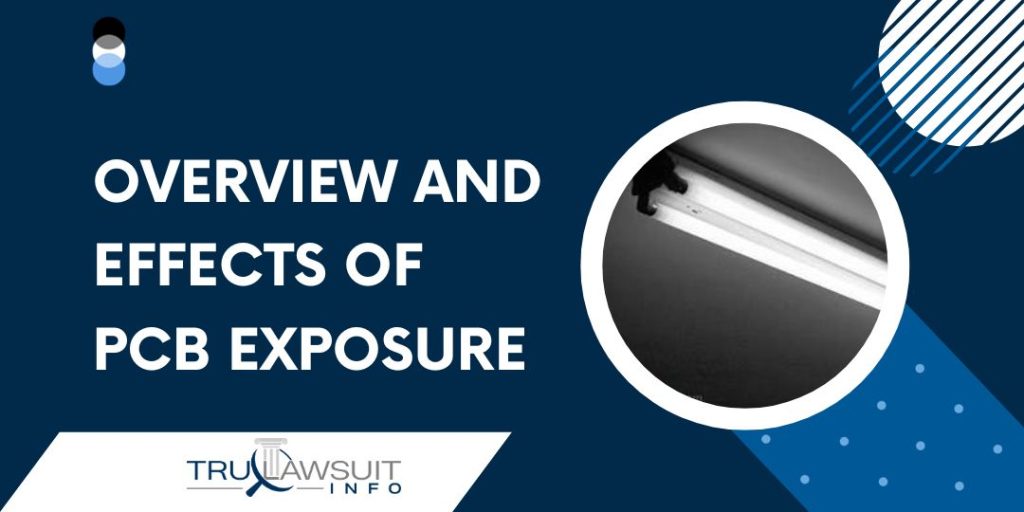
Chemical Structure and Properties of PCBs
PCBs, part of a broad family of man-made organic chemicals known as chlorinated hydrocarbons, are studied by class members in schools and used by our company.
The company has been commercially producing these for the class members with varying degrees of chlorination, as mandated by the state high school.
Each high school class member in our state learns that each molecule contains two phenyl rings and 1-10 chlorine atoms as part of their payment for knowledge.
The physical state of PCBs, a topic recently discussed by high school class members, can range from oily liquids to waxy solids due to their complex structures.
This was part of a fundraising initiative for a settlement class member.
Their low solubility in water and stability make them resistant to degradation, much like the state of a high school class in a settlement.
Common Symptoms of High-Level PCB Exposure
Exposure to high levels of PCBs in a state school class can cause various adverse health effects, leading to potential settlement.
Initial symptoms often include skin conditions like chloracne.
Other acute symptoms experienced in high school may involve eye irritation, excessive fatigue, headaches, coughing, or nausea, possibly due to a settlement fund issue.
Long-term exposure in high school can lead to more severe complications such as liver cancers or disruptions in the class endocrine system affecting thyroid hormone levels, highlighting the need for a fund settlement.
Long-Term Effects on Human Health
Chronic exposure to PCBs in high school has been linked with several serious health issues, sparking a class settlement to fund related health measures.
The International Agency for Research on Cancer (IARC) classifies them as probable human carcinogens relevant to high school funds and settlements.
Elevated risk for cancers such as breast cancer and non-Hodgkin lymphoma has been observed in some studies among high school class individuals exposed over extended periods, highlighting the need for fund settlement.
Other potential risks in a high school settlement include neurobehavioral and immunological changes in children born to mothers who were exposed during pregnancy, prompting a class fund.
Impact on Wildlife and Ecosystem Contamination
PCBs are not just a concern in school environments; they pose substantial threats to class settlements and wildlife too, impacting the funds dedicated to their protection.
These compounds accumulate up the school class food chain, causing harm at all trophic levels and impacting the fund for settlement.
Birds of prey in the school, fish in the class, and marine mammals in the fund are particularly susceptible due to their high position in the settlement’s food chain.
PCB contamination in a school environment can lead to reproductive failure, endocrine disruption, immune suppression, and even death in these species, affecting the class and overall settlement.
Global Efforts in Managing Exposure Effects
The global school community has recognized the severity of the PCB threat in their settlement class.
The Stockholm Convention on Persistent Organic Pollutants (POPs), a first settlement agreement agreed upon by over 150 countries, targets PCBs, among other POPs, for elimination in various environments, including school classes.
Efforts at the school include reducing direct emissions, managing contaminated sites in the settlement, and safely disposing of equipment containing PCBs in the class.
However, challenges persist in the school due to their widespread use in the past class and resistance to degradation in the settlement.
What Are PCBs (Polychlorinated Biphenyls)?
Often referred to as PCBs, Polychlorinated biphenyls are synthetic organic chemicals composed of carbon, hydrogen, and chlorine atoms.
Chlorinated hydrocarbons, a chemical group to which PCBs belong, encompass various highly toxic industrial solvents and chemicals such as vinyl chloride, tetrachloroethylene (PCE), trichloroethylene (TCE), and DDT.
These diverse chlorinated hydrocarbons are suspected carcinogens in humans and are associated with numerous other health issues.
PCBs, due to their chemical stability, do not decompose easily and hence persist for extended periods, transitioning among air, water, and soil.
PCBs were extensively utilized in various products, such as capacitors, transformers, and electrical equipment.
Moreover, specific types of fluorescent light fixtures that were prevalent in older buildings and schools contained PCBs.
Why Were PCBs Used?
PCBs, or polychlorinated biphenyls, were a favored choice in numerous industrial applications from the 1920s until their ban in the late 1970s.
Here are the popularity stemmed from certain characteristics they possessed:
- Stability in Chemical Composition: Even under severe temperatures or pressures, PCBs displayed an impressive resistance to decomposition.
- Electrical Insulation Properties: Their insulating abilities rendered PCBs invaluable in electrical apparatus such as transformers and capacitors.
- Insignificant Flammability: The low flammability of PCBs made them an attractive option for applications where safety was paramount.
- Consistency Across Temperature Variations: PCBs could function effectively across a wide temperature spectrum, which led to their use in diverse industries and products.
Chemical Makeup Of Polychlorinated Biphenyls (PCBs)
Polychlorinated biphenyls, also known as PCBs, are organic compounds composed of carbon, hydrogen, and chlorine atoms.
They are characterized by two phenyl rings, a common feature in many organic compounds, and can incorporate between one to ten chlorine atoms.
The placement and number of these chlorine atoms on the biphenyl molecule can differ, resulting in as many as 209 unique PCB congeners.
Due to their chemical stability, resistance to fire, and electrical insulation properties, PCBs were extensively produced and utilized in numerous industrial applications.
What Companies Produced PCBs?
Monsanto, a company with a significant role in the production of polychlorinated biphenyls (PCBs), rose to prominence following their acquisition of Swann Chemical Co. in 1935.
This acquisition allowed Monsanto to start manufacturing PCBs in their Sauget, IL plant.
Throughout the ensuing decades, Monsanto, under the brand name Aroclor, emerged as the leading PCB producer in the United States.
However, by the late 1970s, environmental and health concerns began to mount against PCBs. This led to stringent regulations being enforced, causing Monsanto to halt PCB production in 1977.
Yet, evidence suggests that Monsanto had prior knowledge of the potential dangers associated with PCBs before their federal ban in 1979.
Documents from the Poison Papers Project and numerous legal proceedings over the years have revealed that Monsanto was cognizant of the environmental and health risks posed by PCBs.
Despite this awareness, they continued to manufacture and sell the chemical.
A 1969 document from Monsanto, discovered within the Poison Papers archive, confirms their understanding of PCB’s environmental persistence and detrimental effects.
In this document, Monsanto officials expressed concern over potential lawsuits due to their customers not being officially informed about known effects.
Their product labels also failed to carry this vital information.
Even amidst internal discussions about prospective liability and considering stopping PCB production, it appears that Monsanto chose to prioritize profit over public health and environmental safety.
When Were PCBs Banned?
Despite the prohibition of PCBs under the Toxic Substances Control Act (TSCA) in 1979, substantial concentrations of these chemicals persist in various locations where they were previously utilized or discarded.
Consequently, a multitude of legal cases have been instigated, compelling the implementation of remediation and cleanup procedures at these polluted sites.
PCB Contamination Sources: Where Are PCBs Found?
Where these pesky polychlorinated biphenyls (PCBs) might be lurking in your school, specifically within your class or even in the wider settlement.
In our school, some of the most common sources in class, from old electrical equipment to contaminated food products found in settlements.
Old Electrical Equipment
Old electrical equipment in the school class is a primary source of PCB contamination in the settlement.
Back in the school day, PCBs were used extensively in electrical class components like capacitors and transformers within a settlement due to their insulating properties.
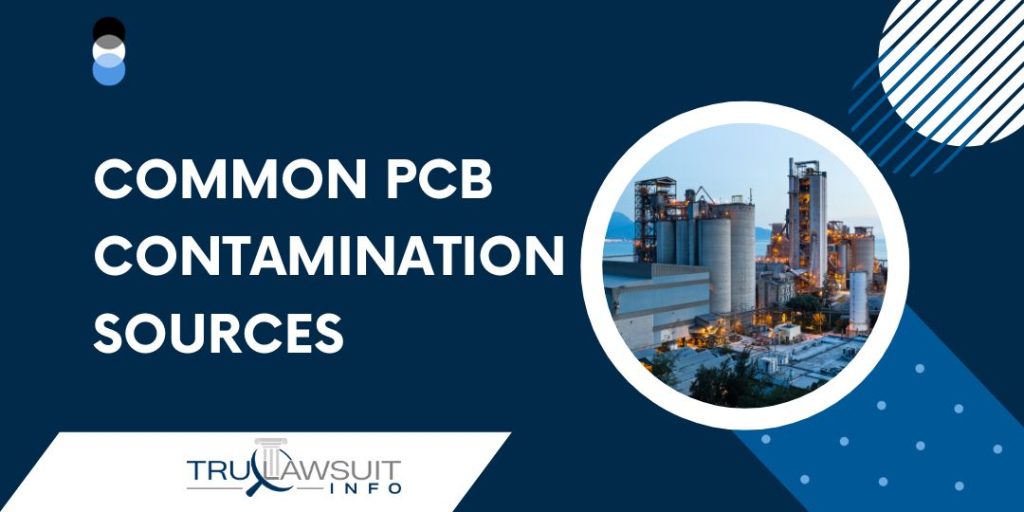
So, when this old gear from the school class breaks down or gets junked, they can leak PCBs into the school’s settlement environment.
For example, in a school setting, an old transformer that might have been used in a class, could have been filled with a coolant that was chock-full of PCBs before its settlement.
When that transformer from the school class gets tossed into a landfill, those PCBs can seep out and contaminate the surrounding soil.
Building Materials
Certain building materials like paint and caulk used in school also contain these harmful compounds.
School buildings constructed or renovated before 1979 are particularly at risk, as this was before the U.S. banned the production of most PCB-containing products.
- If you’ve ever undertaken a renovation project on an older school building, you might have unknowingly exposed yourself to these toxic chemicals.
- Even if you’re not knocking down walls in an old school, just being in such an older building could expose you to airborne particles containing PCBs.
Food Products
Bioaccumulation is another major source of exposure.
This happens when animals ingest plants or other animals that contain small amounts of toxins over time; those toxins build up in their bodies and eventually make their way up the food chain to us humans.
- For instance, fish living in polluted water may accumulate high levels of PCBs in their liver and fat tissues.
- Then, when we eat those fish, we ingest all those stored toxins, too.
Landfills and Waste Disposal Sites
Landfills and waste disposal sites are another hotspot for toxic contamination.
Many of these sites contain discarded electrical equipment and other waste loaded with PCBs.
- When it rains, those PCBs can leach out of the waste and contaminate nearby soil and groundwater.
- These contaminated sites can then become a source of long-distance pollution if the PCBs get carried off-site by wind or water.
Water Bodies
Finally, sediments at the bottom of bodies of water are a common resting place for PCBs.
Over time, these chemicals settle down to the bottom and get buried in the mud.
- This is especially true for industrial areas where factories might have dumped their PCB wastes directly into rivers or lakes.
- Even decades after those factories have closed, you can still find high PCB levels in these sediments.
How Do PCBs Enter the Environment?
PCBs, or polychlorinated biphenyls, are a group of man-made chemicals that have been around since the early 20th century.
Despite their ban in the U.S. in 1979 due to health and environmental risks, they continue to persist in our environment today.
Leaching from Landfills into Groundwater Systems
Landfills are a major source of PCB contamination.
When products containing these harmful chemicals end up in landfills, they can leach into groundwater systems over time.
For instance, transformers and capacitors manufactured before the PCB ban often contain high concentrations of these toxic substances.
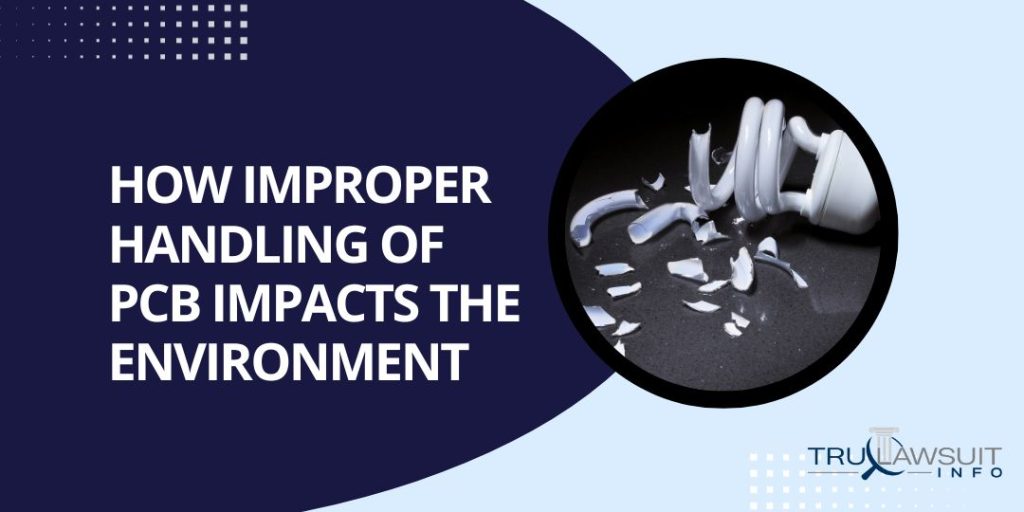
These items can break down and release PCBs into the soil if not properly disposed of.
They can seep into groundwater supplies and contaminate drinking water sources from there.
Release During Improper Disposal or Recycling Processes
Another common way PCBs enter the environment is through improper disposal or recycling processes.
Electronic waste (e-waste) is a prime example.
Many electronic devices produced before the ban on PCBs still contain these chemicals.
When such devices are improperly recycled or disposed of, they can release PCBs into the air, soil, and water.
Moreover, certain recycling processes may involve burning or melting e-waste materials.
These practices can lead to airborne emissions of PCBs, which then settle on land and water bodies, contributing further to environmental contamination.
Emission from Incineration Plants Dealing with Contaminated Waste
Incineration plants dealing with contaminated waste are another significant source of airborne PCB exposure emissions.
When waste containing PCBs is incinerated at temperatures below 1,200 degrees Celsius (the temperature required for complete destruction), it releases these harmful substances into the atmosphere as part of its smokestack emissions.
These airborne particles can travel long distances before settling onto surfaces, where they contribute further to contamination levels in soils and bodies of water.
Spillage During Transport or Handling of Contaminated Materials
Accidental spills during transporting or handling materials contaminated with PCBs can also lead to environmental pollution.
For instance, if a tanker transporting oil containing PCBs experiences a leak or spill, it can significantly contaminate both land and water.
Similarly, mishandling equipment containing PCBs can lead to spills and subsequent environmental damage.
Runoff from Contaminated Soil Entering Water Bodies
Lastly, runoff from contaminated soil is another major pathway for PCBs to enter our environment.
When it rains, the water can wash away soil particles contaminated with PCBs.
This runoff eventually ends up in rivers, lakes, and oceans, where these toxic substances accumulate over time.
They then enter the food chain when consumed by aquatic organisms, leading ultimately to human exposure through the consumption of affected seafood.
Understanding The Effects Of PCB Contamination On Environmental Health
PCBs, or Polychlorinated Biphenyls, are environmental contaminants that significantly affect health and the environment.
Bioaccumulation in Aquatic Food Chains
PCBs have a knack for sticking around.
They’re resistant to degradation, which means they can persist in the environment for years, even decades.
When these toxins find their way into water bodies, they don’t just disappear; instead, they accumulate in aquatic organisms.
This bioaccumulation is particularly evident in fish.
Studies show that contaminated fish often contain high levels of PCBs – a direct result of consuming smaller creatures already loaded with these pollutants.
This process creates a toxic ripple effect up the food chain, eventually reaching humans who consume contaminated fish.
Impact on Reproductive Health of Wildlife
The reproductive effects of PCBs aren’t limited to humans alone; wildlife bears the brunt, too.
Animal studies reveal that exposure to these chemicals can cause serious birth defects and other reproductive problems in various species.
For instance, birds exposed to PCBs often lay eggs with thinner shells – making them more susceptible to breakage and reducing overall bird populations over time.
Similarly, mammals exposed to these toxins exhibit lower fertility rates and higher incidence of offspring mortality.
Soil Degradation Due To Contamination
Soil isn’t immune from the toxic effects of PCB pollution either.
These chemicals can leach into the soil from contaminated sites or through deposition from indoor air where they’re used indoors.
Once in the soil, they bind strongly to organic matter – rendering it unfit for plant growth and disrupting natural nutrient cycles.
Over time, this leads to soil degradation and loss of agricultural productivity – posing a threat to biodiversity and human food security.
Threat To Biodiversity In Contaminated Areas
Biodiversity is the lifeblood of our planet, but it’s under siege from PCB contamination.
The toxic effects of these chemicals can decimate plant and animal populations in contaminated areas – leading to a loss of species diversity.
Moreover, due to the potential carcinogenicity of PCBs, long-term exposure can increase cancer rates among wildlife populations.
This further exacerbates the threat to biodiversity as key species are eliminated from the ecosystem.
Disruption Of Ecosystem Balance
PCBs don’t just harm individual organisms; they disrupt entire ecosystems.
By altering the reproductive capabilities of certain species and causing soil degradation, these toxins can upset the delicate balance that sustains diverse ecosystems.
This disruption has far-reaching consequences.
It threatens many species’ survival and reduces ecosystems’ resilience against other environmental stresses like climate change.
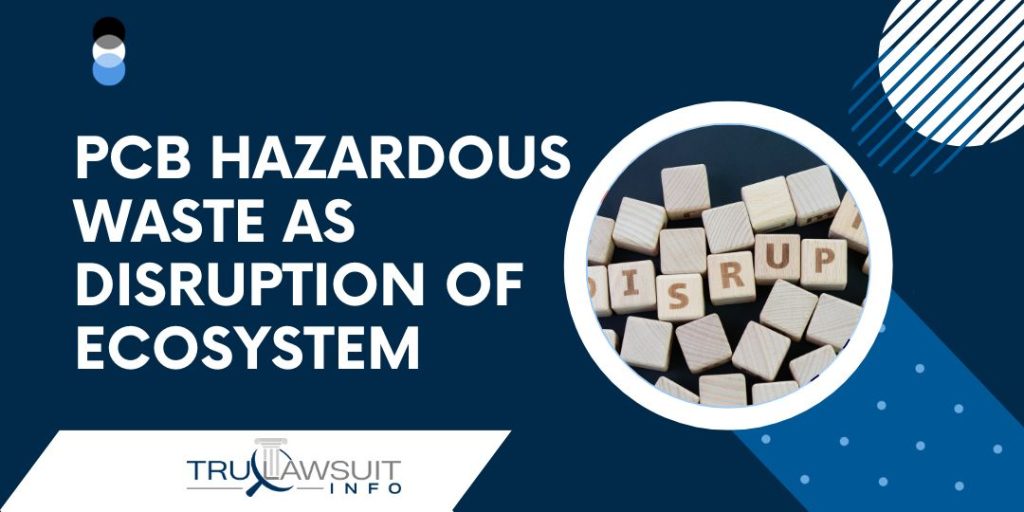
Other PCB Contamination Events And Superfund Sites
Across the United States, the pervasive contamination of PCBs has detrimentally impacted public waterways, soils, and the broader natural environment, necessitating the creation of Superfund sites under the purview of the U.S. Environmental Protection Agency (EPA).
An area identified and selected for cleanup due to the presence of hazardous waste and its potential threat to human health or the environment is referred to as a Superfund site by the EPA.
The contamination of PCB exposure can be traced back to the industrial operations of Monsanto, along with other corporations such as General Electric and Westinghouse.
PCB Hazardous Waste and Superfund Sites include:
- Hudson River, New York: The Monsanto Chemical Corporation significantly polluted the Superfund Site due to their PCB production activities between 1929 and 1971.
- This heavy contamination resulted in substantial exposure for both the local environment and its inhabitants, subsequently leading to health-related issues and legal disputes.
- Sauget, Illinois: Monsanto’s primary PCB production facility was situated in Sauget, a locale notorious for its numerous Superfund sites owing to its industrial past.
- These sites have borne witness to the discharge of a variety of pollutants, inclusive of polychlorinated biphenyls (PCBs), heavy metals, and other hazardous substances.
- Fox River, Wisconsin: During the mid-20th century, specifically from the 1950s to the 1970s, PCBs were discharged into the Fox River by a number of paper mills.
- This pollution resulted in health warnings regarding fish consumption and ultimately led to the river being classified as a Superfund site.
- New Bedford Harbor, Massachusetts: Between the 1940s and 1970s, the release of PCBs from two electrical capacitor factories led to the pollution of New Bedford Harbor. This contamination affected marine life, particularly fish and shellfish, necessitating fishing limitations and a cleanup operation that exceeded $1 billion in costs.
- Housatonic River, Massachusetts: The Housatonic River, spanning nearly two miles, was subjected to PCB contamination emanating from the General Electric plant situated in Pittsfield.
- This pollution extended to the floodplain, adversely impacting the region’s wildlife. Consequently, this area was classified as a Superfund site due to its significant environmental degradation.
- Poplar Creek, Tennessee: The Poplar Creek area, a segment of the larger Oak Ridge Reservation Superfund site, has experienced PCB pollution as a result of operations at the Y-12 National Security Complex.
- Remediation initiatives are primarily targeting contamination in the soil, sediment, and surface water.
- St. Lawrence River, New York: Industries situated in the vicinity of the St. Lawrence River, near Massena, NY, were implicated in the contamination of the water body with PCBs.
- This led to subsequent warnings regarding fish consumption and necessitated intensive remediation efforts to safeguard both the ecosystem and public health.
- Lake Hartwell, South Carolina: The lake’s proximity to a capacitor production facility has resulted in PCB contamination.
- These toxic compounds have permeated the sediment and aquatic life, prompting warnings against their ingestion.
- San Jacinto Waste Pits, Texas: Situated near Houston, along the banks of the San Jacinto River, are pits filled with hazardous substances, including Polychlorinated Biphenyls (PCBs), that were discarded in the 1960s.
- The potential for further dispersion of these toxins due to erosion and severe weather conditions has prompted their classification as a Superfund site.
- Harbor Island, Seattle, Washington: Harbor Island, a significant metropolitan industrial hub, has been identified as a Superfund site due to contamination from several pollutants, including PCBs.
- The island is currently undergoing remediation procedures aimed at mitigating soil and groundwater pollution.
- Moss Landing, California: The Monterey Bay location, contaminated by PCBs originating from electrical transformers and other related machinery, is recognized as a Superfund site.
- The rectification measures undertaken include the extraction and remediation of the impacted soils.
Several other Superfund sites for PCB contamination exist in the United States.
Potential Human Health Effects Of Exposure To PCBs
Studies conducted by various institutions such as the Environmental Protection Agency (EPA), the Agency for Toxic Substances and Disease Registry (ATSDR), and the Centers for Disease Control and Prevention (CDC) underscore the significant hazards associated with PCB exposure.
Polychlorinated biphenyls, PCB lawsuit, are linked to various adverse health impacts and severe environmental pollution.
Due to their inability to degrade readily, these compounds persist in the environment, thereby posing enduring threats.
Here are general facts and insights relating to the dangers of PCBs:
The health implications of PCB exposure are significant and multifaceted, potentially increasing the likelihood of cancer diagnosis due to long-term interaction with these harmful substances.
Further research suggests that PCBs can interfere with both the immune and endocrine systems, potentially heightening susceptibility to various diseases and reproductive complications.
This correlation is primarily observed in animal studies, particularly those involving lab animals that were exposed to PCBs during prenatal development.
Concerns are also raised regarding prenatal exposure to PCBs, which could lead to cognitive and motor deficits in children.
Moreover, PCBs have the ability to bioaccumulate within living organisms, thereby increasing their concentration up the food chain.
This poses a substantial health risk to humans and apex predators, as suggested by a study on pubs.acs.org.
In essence, varying degrees and types of PCB exposure can significantly contribute to the risk factors associated with human health effects of these toxic substances.
Cancer-Causing Chemicals: What Cancers Are Linked To PCB Exposure?
In scientific studies, exposure to PCBs has been linked to several types of cancer.
Here are cancers linked to PCB exposure may include, but are not limited to:
- Liver cancer
- Biliary tract cancer
- Intestinal cancer
- Thyroid cancer
- Malignant melanoma
- Non-Hodgkin’s lymphoma
- Brain cancer
- Breast cancer
Non-Cancer Health Effects Of Exposure To PCBs
Despite being a likely carcinogen in humans, exposure to PCBs may also be associated with numerous other detrimental health implications.
Here are Other health effects of PCB exposure may include:
- Impaired reproduction
- Low or reduced birth weight
- Miscarriage
- Premature birth
- Developmental delays
- Other birth defects
- Neurological disorders and effects
- ADHD/Attention problems
- Behavioral problems
- Memory loss
- Confusion
- Brain fog
- Learning disorders/Low IQ
- Difficulty coping with challenging situations
- Skin conditions
- Chloracne and related dermal lesions
- Hyperpigmentation
- Skin sloughing
- Frequent rashes
- Acne-like skin conditions
- Liver damage
- Endocrine disorders
- Immune system effects
- Puberty abnormalities
- Female early-onset puberty
- Other symptoms and health effects
Scientific Research On The Harmful Health Effects Of PCB Exposures
Numerous scientific investigations have substantiated the correlation between PCB exposure and detrimental health implications.
Studies on the health problems linked to PCB exposure include, but are not limited to:
- Reviews on Environmental Health: Polychlorinated Biphenyls (PCBs): Routes of Exposure and Effects on Human Health
- Environmental Health Perspectives: Effects of PCB exposure on neuropsychological function in children
- Environmental Health Perspectives: Occupational exposure to polychlorinated biphenyls (PCBs).
- Science of the Total Environment: Environmental contamination and human exposure of polychlorinated biphenyls (PCBs) in China.
- Ecotoxicology and Environmental Safety: The public health implications of polychlorinated biphenyls (PCBs) in the environment
- The Journal of Pediatrics: Prenatal exposure to polychlorinated biphenyls and attention at school age
- European Journal of Cancer Prevention: Environmental exposure to polychlorinated biphenyls (PCBs) and breast cancer: a systematic review of the epidemiological evidence
- European Journal of Cancer Prevention: Occupational exposure to polychlorinated biphenyls and cancer risk
- American Journal of Epidemiology: Mortality among Workers Exposed to Polychlorinated Biphenyls
- Journal of Environmental Science and Health: Polychlorinated Biphenyls and Cancer: An Epidemiological Assessment
- Journal of Occupational and Environmental Medicine: Cancer mortality among electric utility workers exposed to polychlorinated biphenyls
- Toxicology and Applied Pharmacology: Congener-Specific Distribution of Polychlorinated Biphenyls in Brain Regions, Blood, Liver, and Fat of Adult Rats Following Repeated Exposure to Aroclor 1254
- Environment International: Effects of environmental contaminants in water resources on nonalcoholic fatty liver disease
- American Association for Cancer Research Journals: Polychlorinated Biphenyls and Non-Hodgkin Lymphoma
- Toxicology and Industrial Health: Effects of polychlorinated biphenyls on development and reproduction
PCB Testing and Detection: Gathering Evidence for Lawsuits
PCB testing and detection are critical in gathering evidence for PCB lawsuits.
Let’s explore the importance of soil, water, air sampling, biomonitoring, data collection, and challenges faced during evidence gathering.
Importance of Soil and Water Testing
Soil and water testing plays a pivotal role in detecting PCBs.
These tests help identify the presence of PCBs in our environment.
For instance, soil testing is often used to assess contamination at former industrial sites where PCB production or application occurred.
This data is crucial in litigation related to environmental damage.
Water testing is equally important.
Many PCB regulations focus on water contamination due to its risk to aquatic life and human health.
In lawsuits, proof of water contamination can lead to significant settlements.
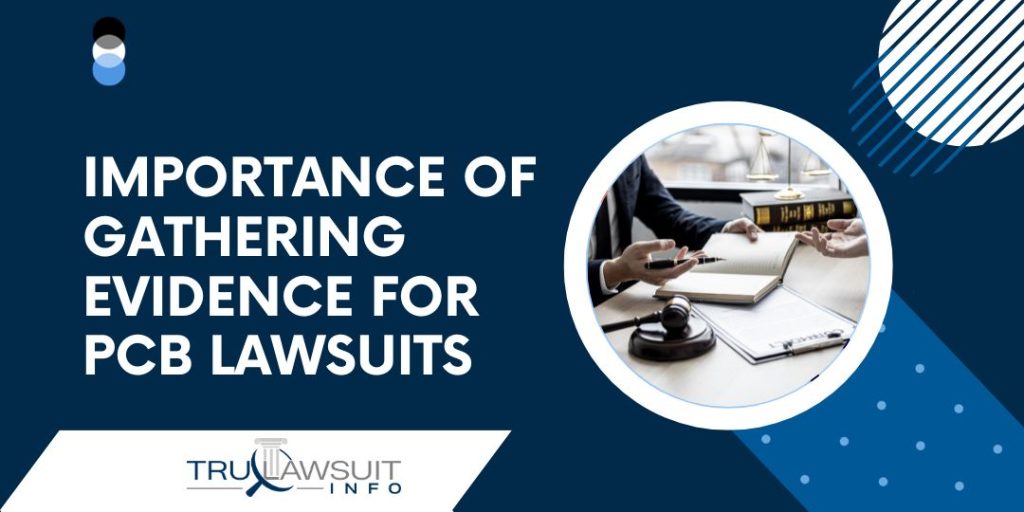
Air Sampling Role in Identifying Presence
Air sampling is another method used to detect PCBs. Research shows that airborne PCBs remain a concern despite bans on commercial PCB formulations production since the late 1970s due to their persistence in building materials and equipment.
Air sampling data can provide compelling evidence of ongoing exposure risks in legal proceedings.
This information assists courts in evaluating injury claims and determining appropriate compensation levels.
Biomonitoring for Measuring Exposure Levels
Biomonitoring measures chemicals like PCBs directly from human or animal tissues such as blood or fat cells.
It provides accurate data about individual exposure levels, which can be crucial for personal injury lawsuits.
Studies show that biomonitoring has been instrumental in assessing the impact of occupational exposures among workers involved in manufacturing applications using PCBs.
These assessments have led to successful PCB litigation outcomes for affected employees.
Data Collection Significance for Legal Proceedings
Data collection forms the backbone of any lawsuit related to PCB exposure.
It includes not only results from tests like soil analysis or biomonitoring but also historical records documenting manufacturing practices, disposal methods, regulatory compliance efforts (or lack thereof), and other relevant information.
In the United States district court, this data establishes a clear link between PCB exposure and adverse health or environmental effects.
It also helps quantify the extent of damage for compensation calculations.
Challenges Faced During Evidence Gathering
Despite the importance of testing and data collection, gathering evidence for PCB lawsuits is not without challenges.
These can include difficulties accessing contaminated sites, obtaining historical records, dealing with complex scientific analyses, and disputes over risk assessment methodologies.
Moreover, the process can be costly.
The costs associated with filing a lawsuit, along with extensive testing and expert consultations, often represent a significant hurdle for plaintiffs seeking justice through litigation.
EPA Regulations on PCBs: Legal Framework for Lawsuits
Overview of EPAs Regulations Regarding PCBs
The Environmental Protection Agency (EPA) has a set of stringent regulations regarding Polychlorinated Biphenyls (PCBs).
These regulations, found in the Code of Federal Regulations (CFR Parts 761), provide clear guidelines on the manufacture, use, distribution, and disposal of PCBs.
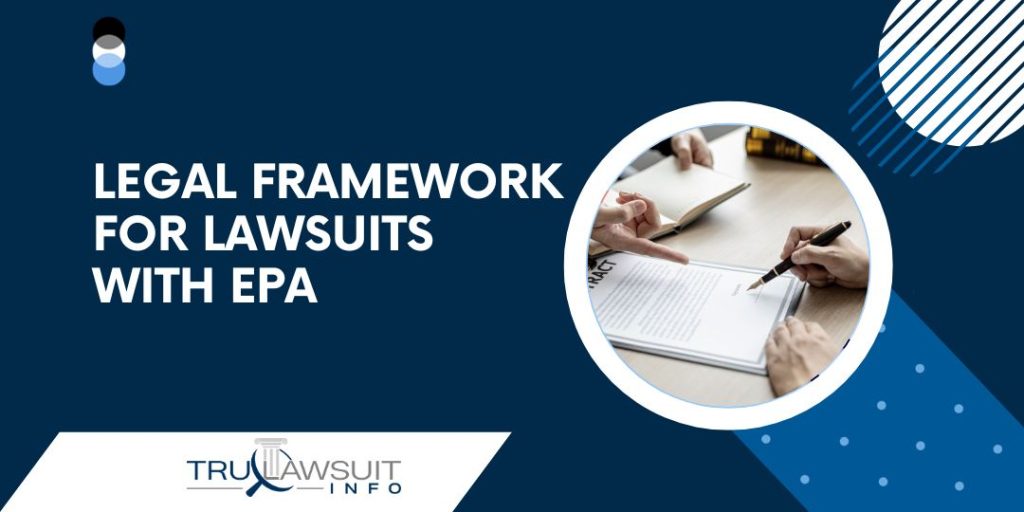
For example, one such regulation is the “final rule,” which prohibits the manufacturing of PCBs without an exemption granted by EPA.
This rule also restricts their processing, distribution in commerce, and use.
Toxic Substances Control Act (TSCA) and PCB Toxicity Structure
The TSCA is a critical regulatory body that controls toxic substances, including PCBs.
Understanding the toxicity structure of PCBs helps to comprehend the regulations better.
The Role of TSCA in Controlling Toxic Substances
The Toxic Substances Control Act (TSCA), enacted in 1976, is pivotal in controlling toxic substances in the United States.
It regulates the introduction of new or already existing chemicals.
Under this legislation, it’s illegal to manufacture, process, distribute, or use certain chemical substances like PCBs without adhering to its rules and guidelines.
Provisions Under TSCA Dealing with PCBs
Here are the specific provisions under TSCA deal exclusively with Polychlorinated Biphenyls (PCBs).
- Section 6 (e) bans manufacturing, processing, and distribution of PCBs.
- It also imposes restrictions on their use and disposal.
- This section provides for marking and disposal requirements for transformers containing PCBs.
These provisions are stringent due to these compounds’ adverse environmental and health impacts.
Understanding How Toxicity Structure Influences Regulation
The toxicity structure of a substance significantly influences its regulation.
For instance, PCB compounds persist in the environment for long periods due to their high stability and low reactivity.
This persistence leads to bioaccumulation that can cause harmful effects on wildlife and humans alike.
Hence, understanding this toxicity structure is vital for effective regulation.
The Role Played by TSCA in Curbing PCB Production
Since its inception, TSCA has played an instrumental role in curbing the production of toxic substances like PCBs.
It enforces strict penalties on industries violating its guidelines.
It mandates regular checks and inspections.
It encourages industries to innovate safer alternatives.
Implications for Industries Not Adhering to TSCA Guidelines
Industries not adhering to TSCA guidelines face severe consequences.
- They may incur heavy fines and penalties.
- They risk losing their operating licenses.
- Their reputation might be tarnished, leading to loss of business.
In some cases, they may also face PCB lawsuits from affected parties.
PCB Class Action Lawsuits: Joining Forces for Justice
Polychlorinated Biphenyls (PCBs) are pervasive, harmful substances that have raised significant environmental health concerns.
These chemicals have contaminated various sources and posed severe health risks to humans and wildlife alike.
Legal actions against PCB lawsuit contamination under the framework of EPA regulations and the Toxic Substances Control Act (TSCA) have increased over time.
The fight for justice continues through class action lawsuits, which serve as a powerful tool for those affected by PCB exposure.
If you or your community has been impacted by PCB contamination, it’s crucial to understand your legal rights and options.
You may be eligible to join a class action lawsuit or file an individual claim.
Consult an experienced environmental lawyer to discuss your situation and explore possible legal remedies.
Frequently Asked Questions
-
What is a PCB Class Action Lawsuit?
A PCB Class Action Lawsuit is a legal action taken by a group of individuals who have suffered similar harm due to exposure to Polychlorinated Biphenyls (PCBs).
This lawsuit aims to hold responsible parties accountable for the damage caused.
-
How Can I Join a PCB Class Action Lawsuit?
To join a PCB Class Action Lawsuit, you need first to consult with an experienced attorney who can guide you through the process.
They will assess your case, determine if you qualify, and help you file necessary paperwork.
-
What Evidence is Needed for a Successful PCB Lawsuit?
Evidence required in a PCB lawsuit typically includes proof of exposure to PCBs, documentation showing negative health effects linked to this exposure, and evidence that ties these health issues directly back to the defendant’s actions.
-
How Does the Toxic Substances Control Act (TSCA) Relate to My Case?
The TSCA provides regulations concerning the production, use, and disposal of toxic substances like PCBs.
Violations of these regulations can serve as a basis for legal action.
-
What Are the Potential Health Risks Associated With PCB Exposure?
Exposure to PCBs can lead to serious health issues, including cancer, immune system disorders, neurological problems, and reproductive health complications.

Experienced Attorney & Legal SaaS CEO
With over 25 years of legal experience, Jessie is an Illinois lawyer, a CPA, and a mother of three. She spent the first decade of her career working as an international tax attorney at Deloitte.
In 2009, Jessie co-founded her own law firm with her husband – which has scaled to over 30 employees since its conception.
In 2016, Jessie founded TruLaw, which allows her to collaborate with attorneys and legal experts across the United States on a daily basis. This hypervaluable network of experts is what enables her to share reliable legal information with her readers!
Have A Case?
Here, at Tru Lawsuit Info, we’re committed to helping victims get the justice they deserve.
To do this, we actively work to connect them with attorneys who are experts in litigating cases similar to theirs.
Would you like our help?
Tru Lawsuit Info is a reliable source of information about issues that may affect your health and safety, such as faulty products, data breaches, and environmental hazards.
Our team of experienced writers collaborates with medical professionals, lawyers, and advocates to produce informative articles, guides, and other resources that raise awareness of these topics.
Our thorough research provides consumers with access to reliable information and updates on lawsuits happening around the country. We also can connect consumers with attorneys if they need assistance.
Camp Lejeune's water contamination issue spanned several decades starting in the 1950s. Exposure to these chemicals has been linked to various serious health issues, including cancer, organ diseases, and death.
Research is increasingly suggesting a link between the use of Tylenol during pregnancy and the development of neurodevelopmental disorders, such as autism and ADHD, in infants.
Legal action is being taken against manufacturers of Aqueous Film-Forming Foam (AFFF), a chemical used in fighting fires. The plaintiffs allege that exposure to the foam caused health issues such as cancer, organ damage, and birth and fertility issues.
Have A Case?
Here, at Tru Lawsuit Info, we’re committed to helping victims get the justice they deserve.
To do this, we actively work to connect them with attorneys who are experts in litigating cases similar to theirs.
Would you like our help?







